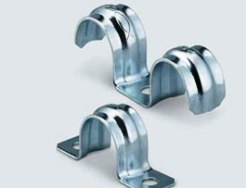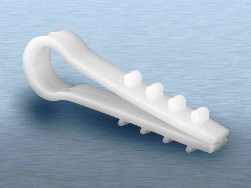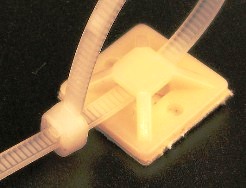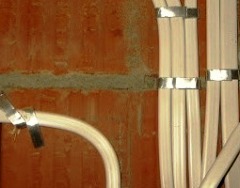Categories: Featured Articles » Electrician at home
Number of views: 74121
Comments on the article: 9
Cable fasteners for electrical installation
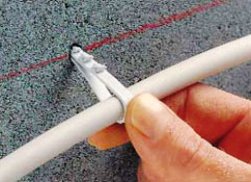 When engaging in electrical work in an apartment or house, do not forget to buy cable fasteners - special wiring products for mounting on brick or concrete walls and cable ceilings without protective boxes (cable channels) and pipes (plastic corrugations or metal hoses).
When engaging in electrical work in an apartment or house, do not forget to buy cable fasteners - special wiring products for mounting on brick or concrete walls and cable ceilings without protective boxes (cable channels) and pipes (plastic corrugations or metal hoses).
The right choice of fasteners is no less important than choice of cable or wire. Modern fasteners are a guarantee of high-quality and reliable fastening!
The most common type of cable fastener for fastening wires and cables is wiring bracket. It is a plastic strip in the form of the letter "p" or curved in an arc, round or flat, depending on the shape of the conductor, which it will hold. The kit includes a nail or a screw.
The most popular in everyday life were electrical mounting brackets, which are used for fastening wires and cables of a small cross section. This bracket can be used to mount conductors to walls and partitions made of brick, plaster, plastic or wood. Staples can also be metal. They are able to hold cable on ceilings of any materials using screws, large nails or dowel nails.
For fastening a wire or cable located in a corrugated pipe or metal hose, it is convenient to use special fixing clipswhich are fixed on a brick or concrete surface using dowels-nails. For these purposes can also be used. BSM metal staples.
Metal staples BSM
A good option in terms of convenience and price is the option of attaching a wire or cable plastic dowel clamp. Drill a hole of the desired diameter and insert a wall plug with a conductor inside. It turns out quickly and quite firmly.
Plastic dowel clamp
One of the latest innovations among cable fasteners has become self-adhesive pads. They are used if the cable must be laid on a decorative surface that cannot be ruined, for example, on furniture. To install this site, you need to peel off the protective layer of paper and stick the fasteners to a flat, clean surface. Further, the cable itself is connected to the site using a special mount or clamp.
Self-adhesive pad
In the event that not one of the special mounts is at hand, you can make them yourself. For this, any thin sheet or plastic is suitable. It is necessary to cut them into strips and apply as a bracket. This is a fairly popular, albeit already long outdated way of attaching wires and cables. During installation, the middle of the strip is attached to the wall with a dowel, and its ends clasp and hold the cable. The main thing is not to forget then to replace this needlework with more aesthetic professional fasteners.
Fixing wires to the wall with metal strips
When performing electrical work, you need to remember one important rule. In no case should you screw the cable with screws or nail it with nails, since damage to the outer protective layer of the wire and insulation of conductive wires can lead to damage to the conductor itself and the most sad consequences. Therefore, the best solution for attaching the cable to the walls during electrical work is to use special cable fasteners.
See also at e.imadeself.com
:

